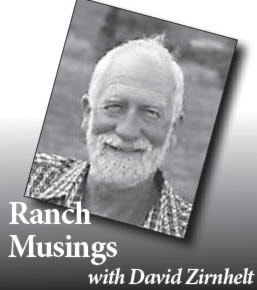In the most recent issue (May 2018) of Canadian Cattlemen, Steve Kenyon has written about a magic bullet which he did not identify until the last word of his article: fence post.
That is right, the magic bullet is a fence post, although you might have to buy them in bulk.
Every day, especially in spring, I am thankful for the fence I built last year and look forward to more this year.
Now, once you have the fences, at least you can manage the land more intensively.
These fences can be permanent or temporary. There is good technology for both.
I am talking about private or leased land here, not the vast open range for the most part. The principles are the same, the stewardship objectives may vary.
For example, on open range we might have to and should manage for traditional uses of food and medicines and wildlife needs for food and shelter.
On your private land, the privilege of having a resource to steward is just that: an awesome privilege. Let’s start by realizing that the natural fertility is a gift from the Creator, whoever you think He or She is.
We are borrowing the resource for those who follow us. We have heard that in First Nations’ cultures, they like to look ahead seven generations and imagine the state the land will be in for those who come later.
Some government policy and some land owners indicate a very short term view of their tenure on the land, but that attitude is not excusable.
Prevention of a degraded future situation is cheaper than restoration.
To prevent over-grazing and to enhance soil health, Steve Kenyon reminds us of the four grazing concepts we need to know: First, the graze period is the amount of time animals are on a certain paddock. Animals should be removed so the grazed plants have a chance to regrow and not be eaten off again until they have recovered.
Second, the amount of time the livestock are off the paddock is the rest period: the energy stores of the perennial plants need time to replenish before regrazing.
Third, stock density. The higher the density the better for the land. You get better manure and urine distribution. After all, 80 per cent of what goes in the animal comes out. The denser the herd, the more evenly they graze all the plants, rather than just be choosy, as they can be if free to roam over longer periods.
Fourth, animal impact is the physical stimulation (natures cultivation) of the soil by animal hooves. Remember the great swaths of ground trampled by the buffalo on the prairie which regenerates when allowed a rest.
Steve, who runs Greener Pastures Ranching in Busby, Alberta, uses these grazing concepts to manage for improved water cycle, energy flow (photosynthesis), nutrient recycling, and improving soil health.
In the end, improved soil health can be realized by managing for the living organisms below the surface of the soil.
After all, they take nature’s free nutrients and make them available for plants for the long term, not just the short term fix.
Thank you, Steve, for the timely reminder: there are silver bullets. We aren’t as “thick as fence posts” when we use posts effectively and for a great cause.
David Zirnhelt is a rancher and member of the Cariboo Chilcotin Cattlemen’s Association. He is also chair of the Advisory Committee for the Applied Sustainable Ranching program at TRU.
